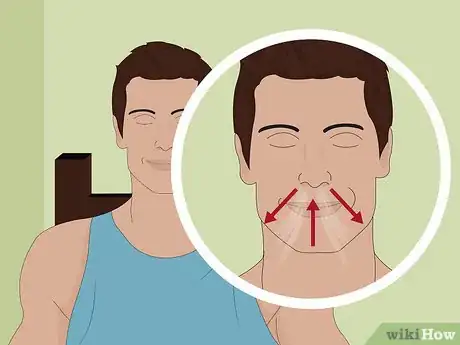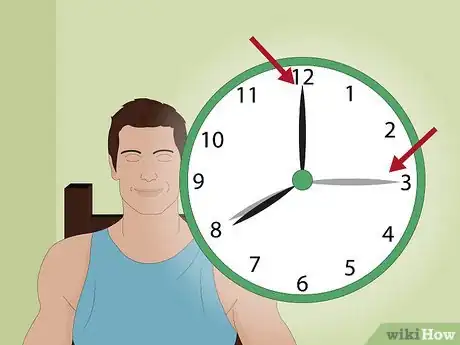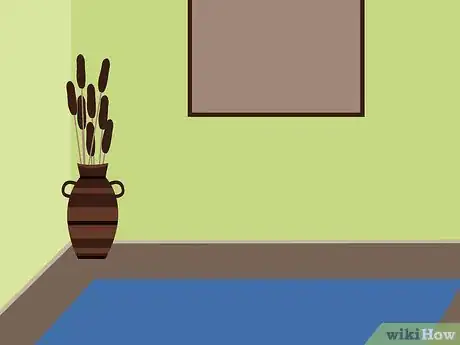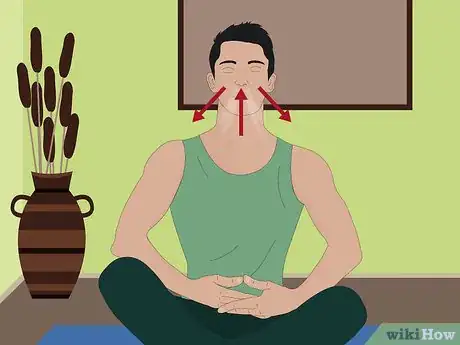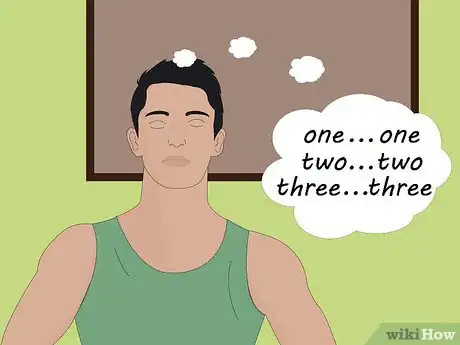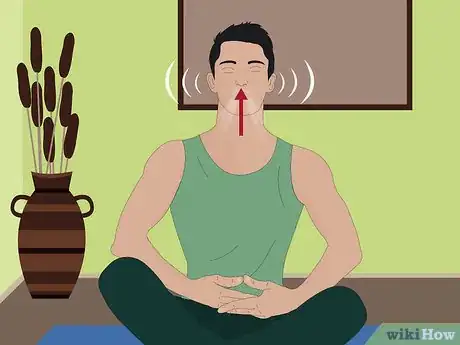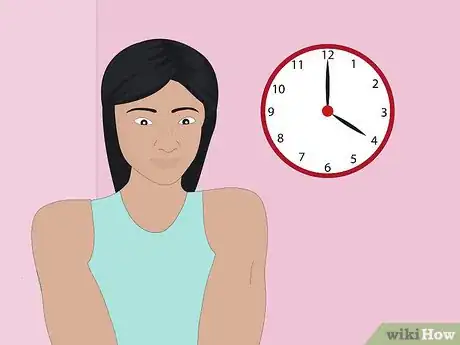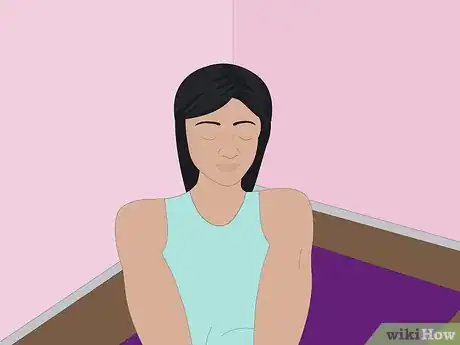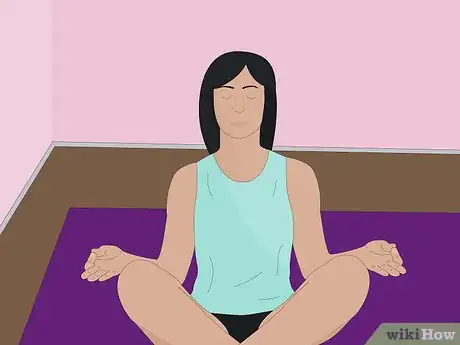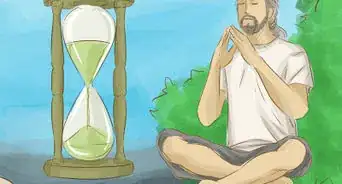This article was co-authored by Ni-Cheng Liang, MD. Dr. Ni-Cheng Liang is a board certified Pulmonologist and the Director of Pulmonary Integrative Medicine at Coastal Pulmonary Associates affiliated with the Scripps Health Network in San Diego, California. She also serves as a Voluntary Assistant Professor of Medicine at the University of California San Diego School of Medicine while volunteering for the UCSD Medical Student-Run Free Clinic for uninsured patients. With over 15 years of experience, Dr. Liang specializes in pulmonary and respiratory medical concerns, mindfulness teaching, physician wellness, and integrative medicine. Dr. Liang received her Doctor of Medicine (MD) from the University of Maryland School of Medicine. Dr. Liang was voted as a San Diego Top Doctor in 2017 and 2019. She was also awarded the 2019 American Lung Association San Diego Lung Health Provider of the Year.
There are 16 references cited in this article, which can be found at the bottom of the page.
wikiHow marks an article as reader-approved once it receives enough positive feedback. In this case, several readers have written to tell us that this article was helpful to them, earning it our reader-approved status.
This article has been viewed 84,117 times.
Meditation is when a person trains the mind to be more self-aware, to look inward, or to reach an altered state of consciousness. It’s an ancient practice with a rich history in India, where both Buddhist and Hindu traditions use it. Meditation has real benefits and can improve your quality of life, whether you do it to relax or for bigger spiritual reasons. Try some of these simple, effective techniques to get started.
Steps
Doing Vipassana Meditation
-
1Sit on the floor or in a chair. Find a place where you can sit comfortably for at least ten minutes. It could be indoors or outside. What matters most, however, is that it is quiet and free from distracting noise like music, television, or people talking.
- Not all noise is bad in the Vipassana tradition. Ambient sound like cars or the ticking of a clock can actually be points for you to focus your mindfulness.
- Ideally, wear loose clothing and remove your shoes.
- Sit on the floor or on a pillow. You can take a number of postures like the half-lotus, full lotus, or cross-legged. Make sure that you are upright, with an unsupported and straight spine.
- If you have back pain, it is also OK to sit erect in a chair.[1]
- Your posture should be upright, but not too tense. You will want your mind and body to be relaxed, while the effort to remain upright should energize your meditation.[2]
-
2Put your hands on your lap. Now, place your hands one on top of the other on your lap, palms facing up. Traditionally, your right hand should rest on top of the left. It may also be helpful for beginners to close their eyes.[3]
- Try not to clench your hands or make fists.
- Closed eyes will help you concentrate. But concentration is not key to Vipassana meditation and you may find it best to open them if, as sometimes happens, you see disturbing images.
Advertisement -
3Focus all your attention on breathing. Turn your attention to the rhythm of your inhalation and exhalation. Some people find it helpful to focus on the rise and fall of their abdomens, for example, an inch or two above the navel. Follow this motion with your mind, from beginning to end.[4]
- If you’re having trouble following the rise and fall of your abdomen, place your hand atop it.
- You might also try focusing on the feeling of air as it passes through your nostrils and touches the skin on your upper lip. This practice is a bit more advanced.[5]
- “Sharpen your attention” to these movements. Be aware of the sensations involved from start to finish. Don’t try to split the act into parts but experience it as one continuous motion.[6]
-
4Notice – and release – other sensations and thoughts. While you are meditating, focus on the “primary object” of your attention, i.e. your breathing. If your mind wanders to a “secondary object,” though, like a thought, a sound, or a feeling, focus on that object for a moment.[7]
- Don’t resist secondary objects. The idea instead is to let them move past you. Pause for a second or two and give them abstract mental notes. If you hear a barking dog, label it “hearing.” If you feel an insect bite, label it “feeling.”[8]
- Once you have noted an object, let it go and return to the primary object of your breathing. Noting thus allows you be aware of the surrounding world without being attached. The sensations should rise and pass over you.
- This detachment is supposed to help you appreciate the impermanence of the world, and the emptiness of self.
-
5Start slowly and increase your meditation. How long should you try to meditate? There’s no right answer, except that some is better than none at all. However, aiming for 15 minutes a day at first is a doable goal. Work up from there.[9] [10]
- Slowly lengthen the time you meditate by about 5 minutes per day each week, until you reach 45 minutes.
- There will be days when you’re too busy to put in 45 minutes of meditation. That’s OK. But try to set aside some time, however short.
Being Mindful with Anapanasati
-
1Find a good, quiet place. Like Vipassana meditation, Anapanasati is about quiet mindfulness. The first step, then, is to find a suitable location. The Buddha recommended three: the forest, the foot of a tree, or an isolated or empty spot.[11]
- Silence is essential to Anapanasati, especially for beginners. For you, a quiet room might be best. A secluded woods or beach might also work well.
- Silence will help you to develop concentration. If you cannot find complete silence, aim for somewhere that is quiet and private.
-
2Sit upright. People can meditate in several different postures, like standing, reclining, sitting, and walking. Sitting is the best for Anapanasati. Ideally, you should take a cross-legged position with both feet turned up and resting on your thighs, i.e. the lotus position.[12]
- Don’t worry if you can’t take the lotus position. It is also acceptable to sit half cross-legged, with one leg slightly bent.
- You should also sit erect. Your torso should be upright but not tense or rigid. Imagine that all the bones in your spine are linked together.
- As for your hands, they should lay gently on your lap. Like in Vipassana, the right hand is traditionally atop the left with the palms up.
- Your eyes can be closed, half-closed, or open – whichever is most comfortable – and your head should be tilted downward, your nose perpendicular to the navel.
-
3Focus on your breath. The focus of your mindfulness in Anapanasati will again be breathing. Turn your mind toward the rising and falling, the inhalation and exhalation of your breath. Follow the sensations involved and be aware of them.[13]
- Be especially mindful of the place when the breath enters and leaves your nostrils. This will be a spot just under your nose or above your upper lip. Center on the spot where the breath touches the skin.
- Be aware: when you breathe in, recognize that you’re breathing in. Likewise when you are breathing out. However, don’t try to control or hold back your breathing. As your awareness of breathing increases, it will become less willful.[14]
-
4Begin with “counting.” There are eight graduated steps in Anapanasati meditation, each one working up to nirvana. The basic and most rudimentary level is “counting.” Counting is intended for those with no background in the technique. People with experience in meditation may not need it and can begin with the second level.
- Fix your attention on the tip of your nose, as said. Now, count the movements of your breath. For example, you might count the first inhalation as “one, one” and the first exhalation as “two, two.” Continue to the tenth breath (“ten, ten”) before returning to “one, one.”
- If you lose track, start again at “one, one.”
- The counting itself is not meditation. It instead helps to calm the wandering mind, by making you aware when you become distracted and lose the count.
-
5Pursue further “steps” to develop your practice. In Anapanasati there are eight total steps. To get further in the technique, you will slowly be able to move into higher levels. “Following” comes next. Once you have calmed your mind with counting, you should be able to mentally track or “follow” the course of your breath without keeping track.[15]
- Following just means to follow the breath with the mind. You do not deliberately breathe in or out, but only remain aware that it takes place. Try to see the beginning, the middle, and the end of each cycle of breaths. This practice is called "experiencing the whole body."
- “Contact” and “Fixing” come next. These both require stronger concentration and are harder to attain. People who reach this level may feel they have stopped breathing altogether, because they are so calm that it’s hard to feel the action of the breath. They must keep focused on the spot under the nostrils. Many report calm, joy, or even powerful visions.
- Very few people make it to the upper steps of the technique. “Observing,” “turning away,” “purification,” and “retrospection” will take you to higher paths of self-awareness.
- If you want to achieve these higher grades, you will most likely need to find a spiritual master to guide you. Consider attending a meditation retreat – monasteries and other centers around the world host such retreats, in many cases as a free service to the community.
Trying Mantra Meditation
-
1Choose a mantra. Mantra meditation comes from the Hindu tradition and involves the meditative repetition of a single word or phrase. This is the “mantra.” The purpose of the mantra is to give you a focus of attention, like breathing in the Vipassana and Anapanasati techniques. First thing, choose your mantra.[16]
- You might pick any word or one that inspires you. Simple is better!
- Some ancient mantras are “Om,” “Om Mani Padne Hum,” “Ham-sah,” or “Namo Amitabah.” Modern mantras might be “peace,” “love,” or “one.”[17]
- Picking a non-English mantra might actually help, because you will have fewer connections to it. It will not distract you from your meditation.
-
2Pick a good time and location. Obviously, there is no right time or place to do your mediation. The choice is a personal one. However, some people find that mantra mediation has its best results if done first thing in the morning, after working, or during your low point in the afternoon at around 4 o’clock.
- As for places, make sure to have a quiet spot where you won’t be disturbed. For instance, try your bedroom, your backyard, or a quiet park, woodlot, or beach.
- The key is to minimize distractions. The quieter and fewer people, the better.
-
3Sit down and close your eyes. You don’t have to sit cross-legged or in the lotus position for mantra meditation. Find someplace comfy to sit upright. If you’d like, support your back with a cushion or the wall or even sit in a chair.[18]
- Lying down is not recommended for this type of meditation – you can easily fall asleep.
- Close your eyes and sit still for a half a minute or so. Get accustomed to your environment and draw in several deep breaths.[19]
-
4Chant your mantra. After a few deep breaths, resume your normal breathing and start to chant your mantra. Some people are comfortable doing this aloud. Otherwise, repeat the word silently in your head without moving your tongue or lips.[20]
- Don’t force things. The repetition of the mantra should be relaxed and gentle.
- You also don’t need to worry about coordinating the mantra with your breath. Let both come as naturally as you can.
- Some people find it helps to imagine that the mantra is being whispered in their ear, rather than coming from their own mind.
- Stay fixed on the mantra and don’t try to empty your mind. When your attention wanders, just bring it back to the mantra and your breathing. Don’t worry if this happens – it’s normal. What’s more important is that you realize when you start to wander and refocus.
-
5Start slowly and work your way to longer sessions. Try to repeat your mantra for 5 minutes at a time to start. Gradually, you should be able to go for up to 20 to 30 minutes, several times per week. Other people alternatively aim for a certain number of repetitions, traditionally 108 or 1008.[21]
- Some people use cellphone alarms as timers, while others sit with a clock in view. It really doesn’t matter. Do whatever works best for you.
- When you wind down, stop saying the mantra and sit silently for a few more minutes to relax. Let yourself slowly re-enter your normal activities. Otherwise, you may feel groggy like you’ve gotten up from a nap.
References
- ↑ http://www.lionsroar.com/how-to-practice-vipassana-insight-meditation/
- ↑ http://www.lionsroar.com/how-to-practice-vipassana-insight-meditation/
- ↑ https://www.facebook.com/medvipassana/posts/mudrasthere-are-various-gestures-made-with-the-hands-fingers-that-are-called-mud/630790277006486/
- ↑ https://www.dhamma.org/en-US/about/art
- ↑ http://liveanddare.com/types-of-meditation/
- ↑ http://www.lionsroar.com/how-to-practice-vipassana-insight-meditation/
- ↑ http://liveanddare.com/types-of-meditation/
- ↑ http://www.vipassanadhura.com/howto.htm#h
- ↑ http://www.buddhanet.net/e-learning/qanda06.htm
- ↑ http://www.wildmind.org/mindfulness/four/how-long-should-i-meditate-each-day
- ↑ https://www.thedailymeditation.com/anapanasati-3
- ↑ https://www.thedailymeditation.com/anapanasati-3
- ↑ https://www.yogajournal.com/meditation/breathing-lessons/
- ↑ http://www.yogajournal.com/article/practice-section/breathing-lessons/
- ↑ https://www.thedailymeditation.com/anapanasati-3
- ↑ http://www.chopra.com/ccl/learn-to-meditate-in-6-easy-steps
- ↑ https://tricycle.org/beginners/buddhism/what-is-a-mantra/
- ↑ http://www.chopra.com/ccl/learn-to-meditate-in-6-easy-steps
- ↑ http://faculty.weber.edu/molpin/healthclasses/1110/meditationguidelines.htm
- ↑ http://www.chopra.com/ccl/learn-to-meditate-in-6-easy-steps
- ↑ http://liveanddare.com/types-of-meditation/
About This Article
Begin your Indian meditation by finding a quiet place to sit and straightening your spine. Next, place your hands in your lap and close your eyes to block out distractions. Now, try to focus on your breathing by paying attention to the rise and fall of your belly. While you are meditating, notice any thoughts and distractions that enter your mind, and then let them go, returning to your breath. This technique helps you stay present in the moment and recognize that nothing is permanent. For more methods, such as mantra meditation, read on!



